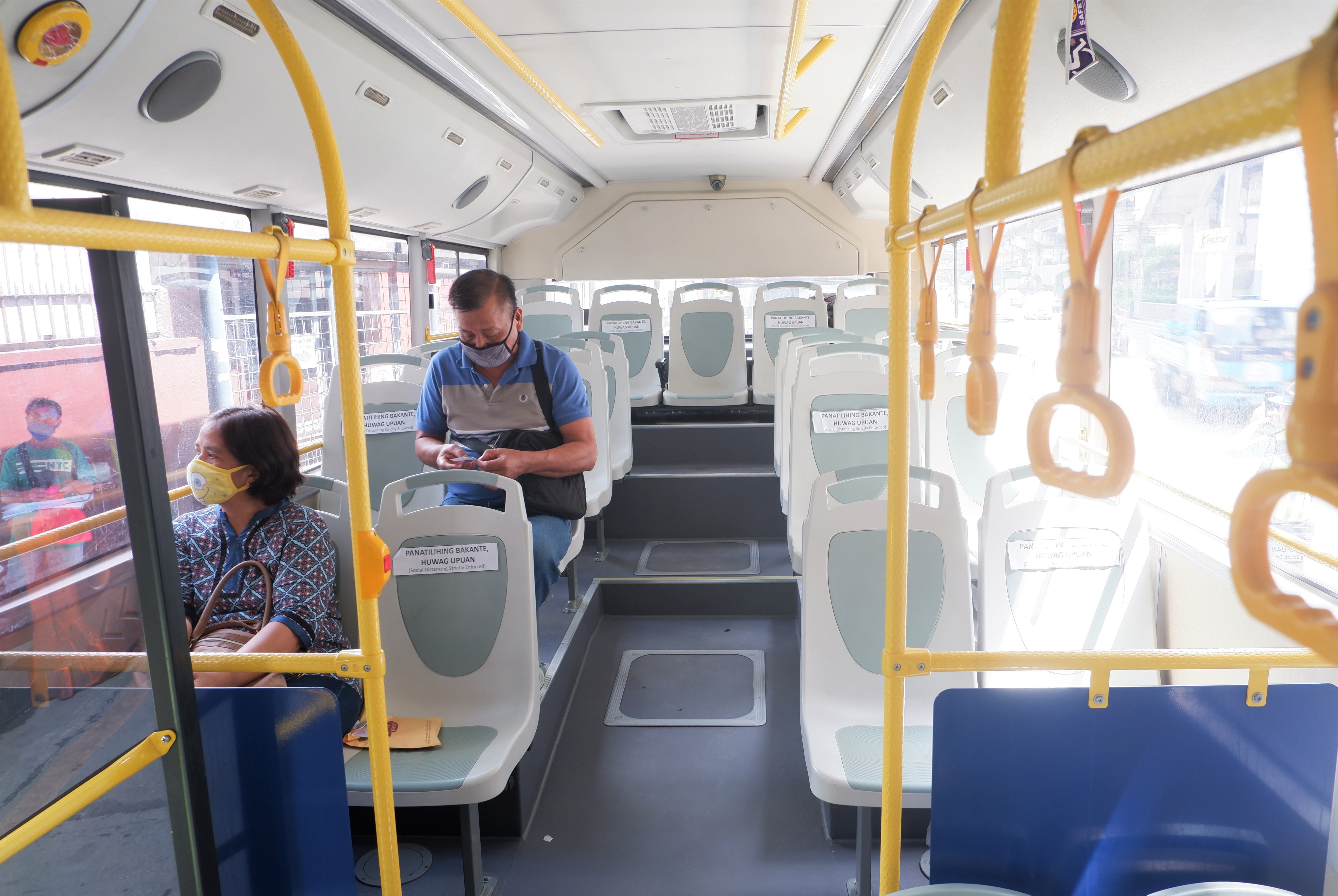Headline
Require just 50% of workers to physically report, firms told

FILE: UNDER ‘NEW NORM’. Commuters follow safe physical distancing as they wait for other passengers inside the bus augmentation service under the general community quarantine (GCQ) along Edsa, Quezon City on Monday (June 1, 2020). Physical distancing in public utility buses (PUBs) will be the “new normal” to prevent the spread of the coronavirus disease 2019 (Covid-19). (PNA photo by Robert Oswald P. Alfiler)
MANILA – Malacañang on Tuesday discouraged private firms from requiring all of their employees to physically report for work even if it is allowed in areas under general community quarantine (GCQ) and modified GCQ (MGCQ).
In a virtual presser, Presidential Spokesperson Harry Roque made this appeal as he reminded employers and business owners that public transportation in the country remains on a limited capacity.
He acknowledged passengers have been complaining about getting stranded due to lack of transportation during the first day of eased quarantine protocols across the country on Monday (June 1).
“Ang pakiusap po natin ay bagamat tayo ay GCQ na, subukan pa rin natin na mag 50-50 [percent] at least dahil talagang hindi po sapat ang transportasyon natin kung papapasukin natin ang hundred percent ng ating workforce (Our appeal is even if we have transitioned to GCQ, let’s still maintain having only 50 percent of our workforce physically report for work because we do not have enough transportation if we allow 100 percent of our workforce)” he said.
He urged private firms to follow the example of government agencies which only allow half of their workforce to physically report for work by providing the rest with alternative work arrangements such as the work-from-home scheme.
“Sana ganun din ang gawin ng pribadong sektor dahil sa ngayon po wala pa talagang 50 percent capacity ang ating public transportation (I hope the private sector would do the same because right now, the capacity of our public transport has not even reached 50 percent),” he said.
Transport Secretary Arthur Tugade, in the same briefing, observed that physical distancing was successfully implemented in the country’s rail systems while the bus augmentation system “worked”.
He said the transport department is eyeing additional routes to address the traffic situation in major thoroughfares in Metro Manila.
Shuttle services will also continue to be provided for all healthcare workers, he added, baring that his agency has served over 1 million passengers to date.
“Kahapon, lumagpas na kami sa isang milyon na siniserbisyuhan na mga front-liner at mga medical practitioner (Yesterday, the number of front-liners and medical practitioners we have been transporting to work has surpassed 1 million),” he said.
The gradual resumption of public transport in areas placed under GCQ will be done in two phases starting Monday (June 1).
Phase 1, which covers June 1 to 21, allows the operation of trains and bus augmentation, taxis, transport network vehicle services (TNVs), shuttle services, point-to-point buses, and bicycles with limited passenger capacity.
Tricycles will be allowed to operate in areas under GCQ with approval from concerned local government units (LGUs).
However, provincial buses will remain banned from entering Metro Manila
Phase 2, which covers June 22 to 30, will allow Public Utility Buses (PUBs), modern public utility vehicles (PUVs), and UV Express will be permitted to operate with limited passenger capacity, along with the transport modes allowed in Phase 1.
Metro Manila, Cagayan Valley, Central Luzon, Calabarzon, Central Visayas, Pangasinan, Albay, Zamboanga City, and Davao City are currently under GCQ since Monday. The rest of the country is under MGCQ.





















